Amica EKSS 361 210 Manual
Læs gratis den danske manual til Amica EKSS 361 210 (192 sider) i kategorien Køleskab. Denne vejledning er vurderet som hjælpsom af 14 personer og har en gennemsnitlig bedømmelse på 4.8 stjerner ud af 7.5 anmeldelser.
Har du et spørgsmål om Amica EKSS 361 210, eller vil du spørge andre brugere om produktet?

Produkt Specifikationer
| Mærke: | Amica |
| Kategori: | Køleskab |
| Model: | EKSS 361 210 |
| Vekselstrømsindgangsspænding: | 220 - 240 V |
| Vekselstrømsindgangsfrekvens: | 50 Hz |
| Bredde: | 540 mm |
| Dybde: | 540 mm |
| Højde: | 1020 mm |
| Vægt: | 31000 g |
| Produktfarve: | Hvid |
| Lampe type: | LED |
| Ledningslængde: | 1.8 m |
| Pakkevægt: | 34000 g |
| Pakkedybde: | 573 mm |
| Pakkebredde: | 573 mm |
| Pakkehøjde: | 1070 mm |
| Årligt energiforbrug: | 183 kWh |
| Placering af apparat: | Indbygget |
| Dørhængsel: | Højre |
| Installationsrum bredde: | 560 mm |
| Installationsrum dybde: | 550 mm |
| Installationsrum højde: | 1025 mm |
| Tilsluttet belastning: | - W |
| Støjniveau: | 39 dB |
| Strømkilde: | Elektrisk |
| Energieffektivitetsskala: | A til G |
| Støjemissionsklasse: | C |
| Energieffektivitetsklasse: | F |
| Vendbare døre: | Ja |
| Fryser, netto rumindhold: | 16 L |
| Frysekapacitet: | 2 kg/24t |
| Opbevaringstid under strømafbrydelse: | 11 t |
| Klimaklasse: | ST |
| Køleskab antal hylder/kurve: | 2 |
| Antal grøntsagsskuffer: | 1 |
| Æggebakke: | Ja |
| Køleskabsdøre: | 3 |
| Køleskab, netto rumindhold: | 124 L |
| Total netto kapacitet: | 140 L |
| Køleskab indvendigt lys: | Ja |
| Stjernebedømmelse: | 4* |
| Fryser position: | Top - placeret |
| Hylder, materiale: | Hærdet glas |
| Åben dør alarm: | Ja |
| Isterning bakke: | Ja |
| Energiforbrug: | 0.54 kWh/24t |
| Automatisk afrimning (køleskab): | Ja |
| Minimal driftstemperatur: | 16 °C |
| Maksimal driftstemperatur: | 38 °C |
| Dørmontering: | Dør glider |
Har du brug for hjælp?
Hvis du har brug for hjælp til Amica EKSS 361 210 stil et spørgsmål nedenfor, og andre brugere vil svare dig
Køleskab Amica Manualer



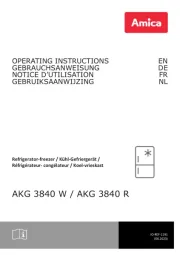

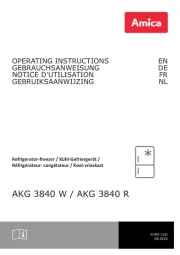
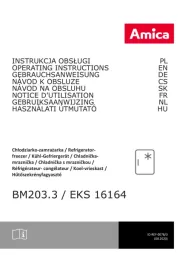
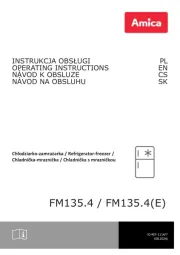
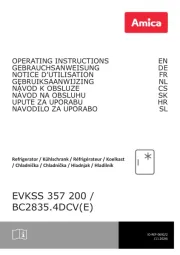
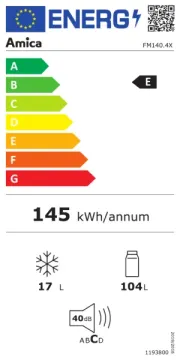
Køleskab Manualer
- Thomson
- Changhong
- Foster
- Bartscher
- Lavorwash
- Electrolux-Rex
- Vinata
- Transtherm
- Junker
- Limit
- Coors Light
- Sogo
- Thorens
- Saivod
- Furrion
Nyeste Køleskab Manualer









